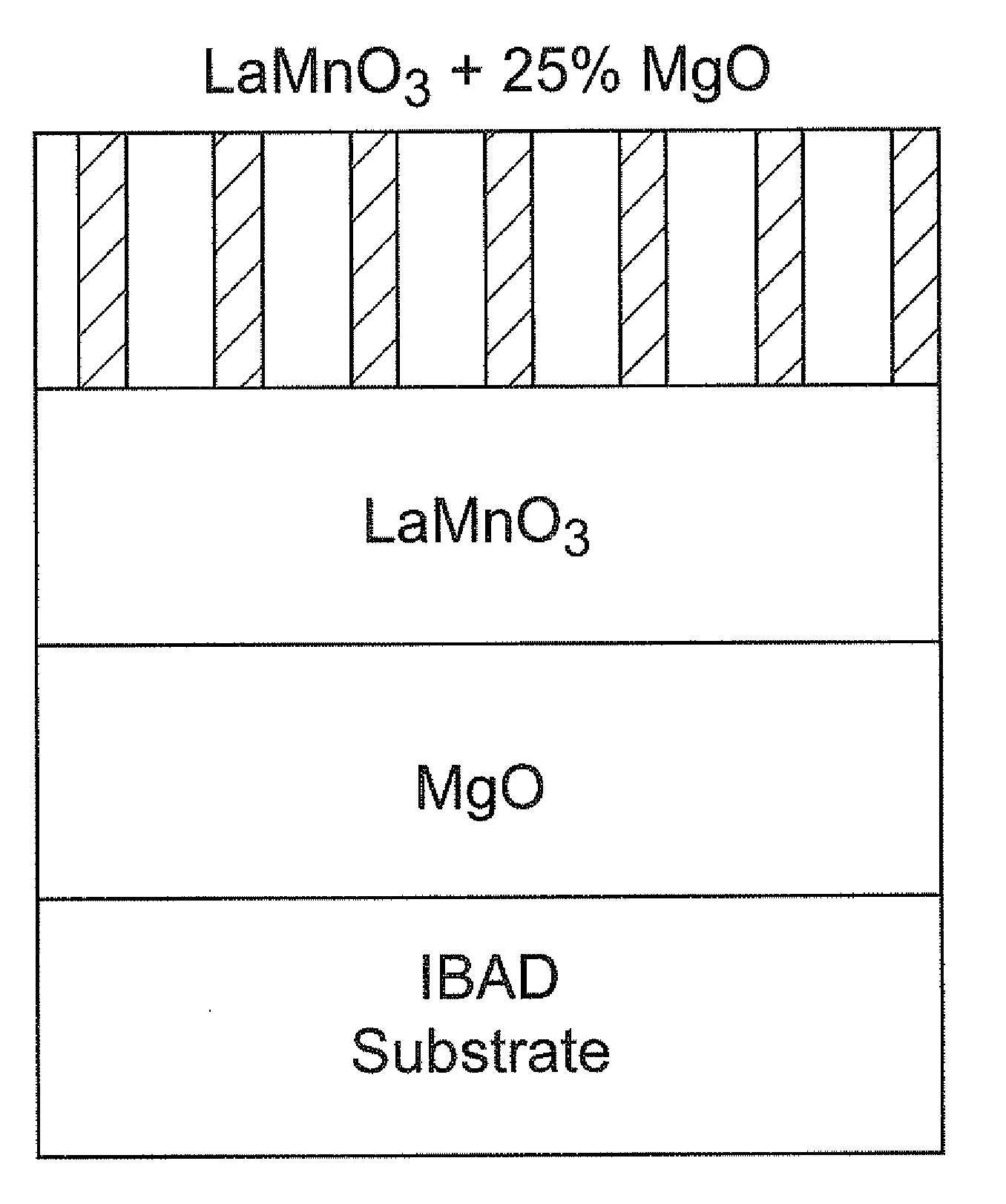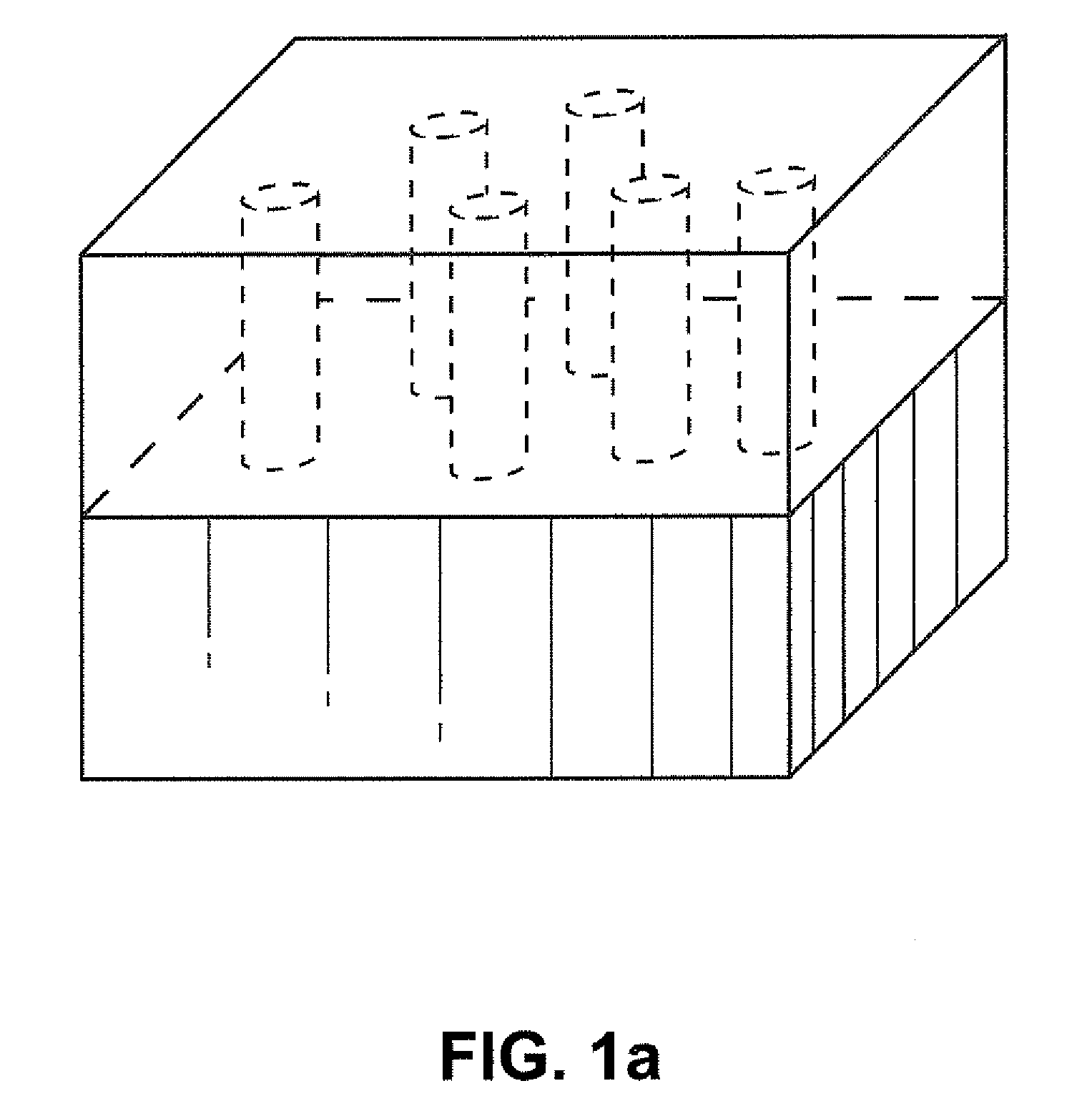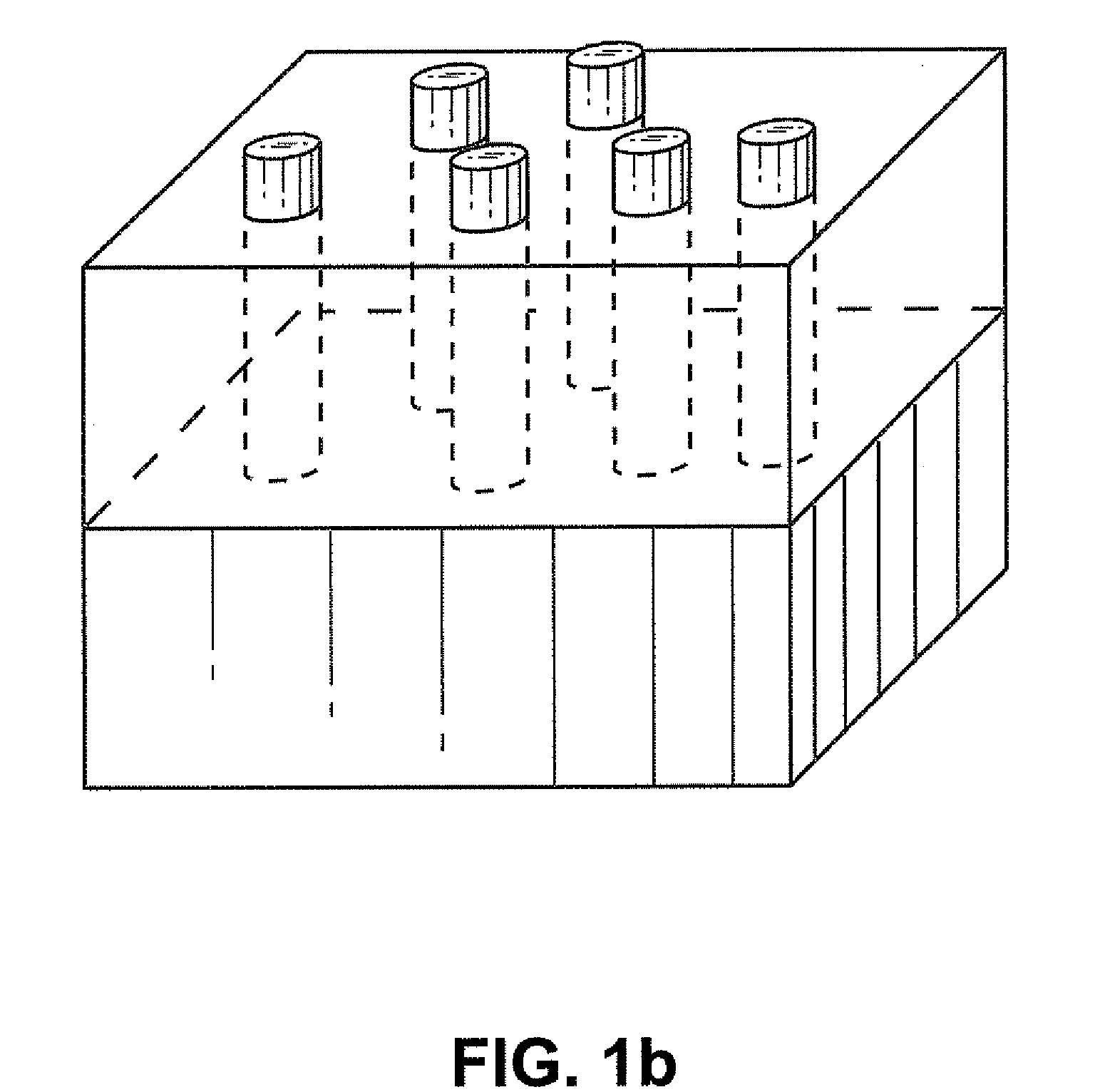Superconductor films with improved flux pinning and reduced ac losses
a technology of superconductor films and fluxpinning, applied in the direction of superconductors/hyperconductors, electrical equipment, coatings, etc., can solve the problems of hts tapes operating in the presence of alternating current (ac) suffering from a significant amount of energy dissipation, hts tapes and wires operating in the presence of ac, and hts tapes and wires suffering from ac loss, etc., to redu
- Summary
- Abstract
- Description
- Claims
- Application Information
AI Technical Summary
Benefits of technology
Problems solved by technology
Method used
Image
Examples
example 1
Phase-Separated Layers Containing CoFe2O4 and BaTiO3 as Components Epitaxially Grown on a SrTiO3 Substrate
[0116]Phase-separated layers containing CoFe2O4 and BaTiO3 as components were grown epitaxially on a SrTiO3 substrate according to the following procedure. (100) oriented SrTiO3 substrates were mounted onto a heater of a pulsed laser ablation deposition system using silver paste. Depositions were performed using a mixed target of CoFe2O4 and BaTiO3, prepared via solid state sintering. Depositions were performed in a temperature range of 700-950° C. All depositions were performed using a KrF excimer laser (λ=248 nm). FIGS. 4a-4c are micrographs obtained using atomic force microscopy.
[0117]FIGS. 4a-4c show CoFe2O4—BaTiO3 phase-separated systems that vary in the volume concentration of the CoFe2O4 component (herein functioning as a nanophase component shown as the light-colored phase) relative to a BaTiO3 component (herein functioning as a matrix component shown as the dark-colored...
example 2
Phase-Separated Layer Containing MgO and LaMnO3 as Components Epitaxially Grown on a SrTiO3 Substrate
[0118]Phase-separated layers containing MgO and LaMnO3 as components were grown epitaxially on a SrTiO3 substrate according to the following procedure. (100) oriented SrTiO3 substrates were mounted onto a heater of a pulsed laser ablation deposition system using silver paste. Depositions were performed using a mixed target of MgO and LaMnO3, prepared via solid state sintering. Depositions were performed in a temperature range of 700-950° C. All depositions were performed using a KrF excimer laser (λ=248 nm).
[0119]FIG. 5a is a depiction of a phase-separated, 25 vol % MgO / 75 vol % LaMnO3 (LMO) layer of film grown epitaxially on a SrTiO3 substrate. FIG. 5b shows a theta-2theta X-ray diffraction scan of the phase-separated, 25 vol % MgO-75 vol % LaMnO3 layer of film grown epitaxially on a SrTiO3 substrate. Separate peaks corresponding to MgO and LaMnO3 can be observed indicating phase se...
example 3
Phase-Separated Layer Containing MgO and LaMnO3 as Components Epitaxially Grown on a LaMnO3 / MgO / IBAD MgO / Hastelloy® Substrate
[0120]Details of fabrication of the substrate comprised of LaMnO3 / MgO / IBAD MgO / Hastelloy® can be found in U.S. Pat. No. 6,764,770. Phase-separated layers containing MgO and LaMnO3 as components were grown epitaxially on this substrate according to the following procedure. The substrates were mounted onto a heater of a pulsed laser ablation deposition system using silver paste. Depositions were performed using a mixed target of MgO and LaMnO3, prepared via solid state sintering. Depositions were performed in a temperature range of 700-950° C. All depositions were performed using a KrF excimer laser (λ=248 nm).
[0121]FIG. 6a is a schematic depiction of a phase-separated, 25 vol % MgO / 75 vol % LaMnO3 layer of film grown epitaxially on the LaMnO3 / MgO / IBAD MgO / Hastelloy® substrate.
[0122]FIG. 6b is a high-resolution scanning Auger map of the surface of phase-separate...
PUM
| Property | Measurement | Unit |
|---|---|---|
| Temperature | aaaaa | aaaaa |
| Phase separation | aaaaa | aaaaa |
| Density | aaaaa | aaaaa |
Abstract
Description
Claims
Application Information
 Login to View More
Login to View More - R&D
- Intellectual Property
- Life Sciences
- Materials
- Tech Scout
- Unparalleled Data Quality
- Higher Quality Content
- 60% Fewer Hallucinations
Browse by: Latest US Patents, China's latest patents, Technical Efficacy Thesaurus, Application Domain, Technology Topic, Popular Technical Reports.
© 2025 PatSnap. All rights reserved.Legal|Privacy policy|Modern Slavery Act Transparency Statement|Sitemap|About US| Contact US: help@patsnap.com



